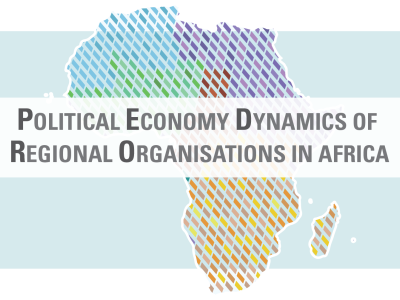
11th CAADP Partnership Platform: “Walking the Talk" on regional cooperation?
Its theme this year is “Walking the Talk: Delivering on Malabo Commitments”. The overall objective is shaping how the Malabo ambitions and new specific commitments will be translated into action, results and impact; focusing on the systemic institutional and policy changes that are being targeted to increase the efficiency, effectiveness and sustainability of CAADP efforts.
The Platform will be a practical exercise of evaluating the capacities and partnerships that are currently in place for CAADP, and, on the basis of that, suggesting how to fill gaps with new partnerships or resources and how to better divide tasks among all stakeholders contributing to the implementation of CAADP.
The Malabo Declaration is innovative, also since it pays more attention to the role of regional markets and regional value chains for food security. In general, it calls for better use of regional complementarities and cooperation opportunities in order to boost economic growth and resilience. But Malabo also launched new commitments: to triple intra-African trade in agricultural goods and services by 2025 (including efforts to accelerate the establishment of the Continental Free Trade Area); and to launch regional public-private partnerships to develop strategic agricultural value chains with strong linkages to smallholder agriculture.
This is a very welcome move, also reflected in the Malabo “Implementation Strategy and Roadmap” (IS&R) adopted at the AU Summit in January 2015: one of the 11 “strategic action areas” is “market infrastructure, regional trade and integration, and regional value chains development”. This points to the fact that Regional Economic Communities (RECs) should now have a stronger role in CAADP implementation. Not only for the aforementioned new Malabo targets, but because RECs are better positioned than continental institutions in helping Member States in their own CAADP processes. RECs have another advantage, they can learn from each other on designing and implementing the regional compacts and investment plans that are crucial complements to the national CAADP plans.
Indeed, many believe that compared to the first ten years of CAADP, in the next years to come RECs should play a stronger role in filtering between continental and national CAADP processes. This is also in line with recent progress made by RECs on their regional CAADP plans. While ECOWAS was for many years the only REC with a Regional Compact and Investment Plan, between 2013 and 2014, also COMESA, EAC, IGAD, ECCAS, and SADC adopted their own.
Despite this, the Malabo Declaration and the IS&R do not say much in terms of the exact role of RECs and what their needs are, for them to be able to play such stronger part in the future of CAADP, in particular on the regional dimensions.
In fact, the IS&R only says that in operationalising the implementation strategy – amongst numerous proposals – coordination mechanisms will also be strengthened among NPCA, AUC, and RECs. In those documents there is no actual differentiation between RECs and the two continental lead institutions when specifying issues of capacity, institutional development and better monitoring systems. On the contrary, the Malabo Declaration itself only gives the related mandates to AUC and NEPAD. For what we’ve seen so far, the IS&R tends to bundle NPCA-AUC-RECs when defining roles and responsibilities for the planned actions and results in the various “strategic action areas”. The risk is that weak involvement of RECs in continental processes leads to the RECs losing interest, as it happened over the last couple of years, with some RECs hardly attending the relevant coordination meetings.
Given all of the above, what I would recommend is:
- RECs should lead any working group at continental level aimed at facilitating the achievement of the Malabo targets related to trade and regional value chains. This is because RECs are responsible for improving regional trade regulations, overseeing implementation of important trade agreements with external partners (e.g. EPAs with EU) and have the advantage that they already have direct, vast, experience trying to ensure member states’ compliance to the agreed regional cooperation protocols.
- There is a need for pragmatic initiatives to remove trade barriers for a small set of priority food commodities (where real political commitment and commercial interests can effectively change policies and practices), rather than new ambitious plans like the Continental Free Trade Area.
- Capacity strengthening for RECs themselves is key, both to strengthen their national level support and for the implementation of regional CAADP investment plans (including more policy enforcement capacity for regional decisions).
- “Grow Africa”, the AUC-NEPAD-World Economic Forum partnership for private sector involvement in CAADP, should work more with RECs, so that public-private partnerships are launched along Agricultural Growth Corridors and different political and commercial interests are effectively dealt with, towards more inclusive cross-border value chain development.
- Donors should put more funds into regional processes. What happened to the development of a second CAADP multi donor trust fund (MDTF)? We have no news on that, which is worrying as the MDTF provided one umbrella for various assistance mechanisms (for continental and regional institutions), thus facilitating coordination between all institutions supporting CAADP implementation.
- Finally, Development Partners should launch regional level working groups, based in the RECs, in order to support the regional CAADP processes more directly.
I’ll be in Johannesburg for the CAADP PP, raising these issues. Follow me on Twitter!
The views expressed here are those of the author and not necessarily those of ECDPM.


